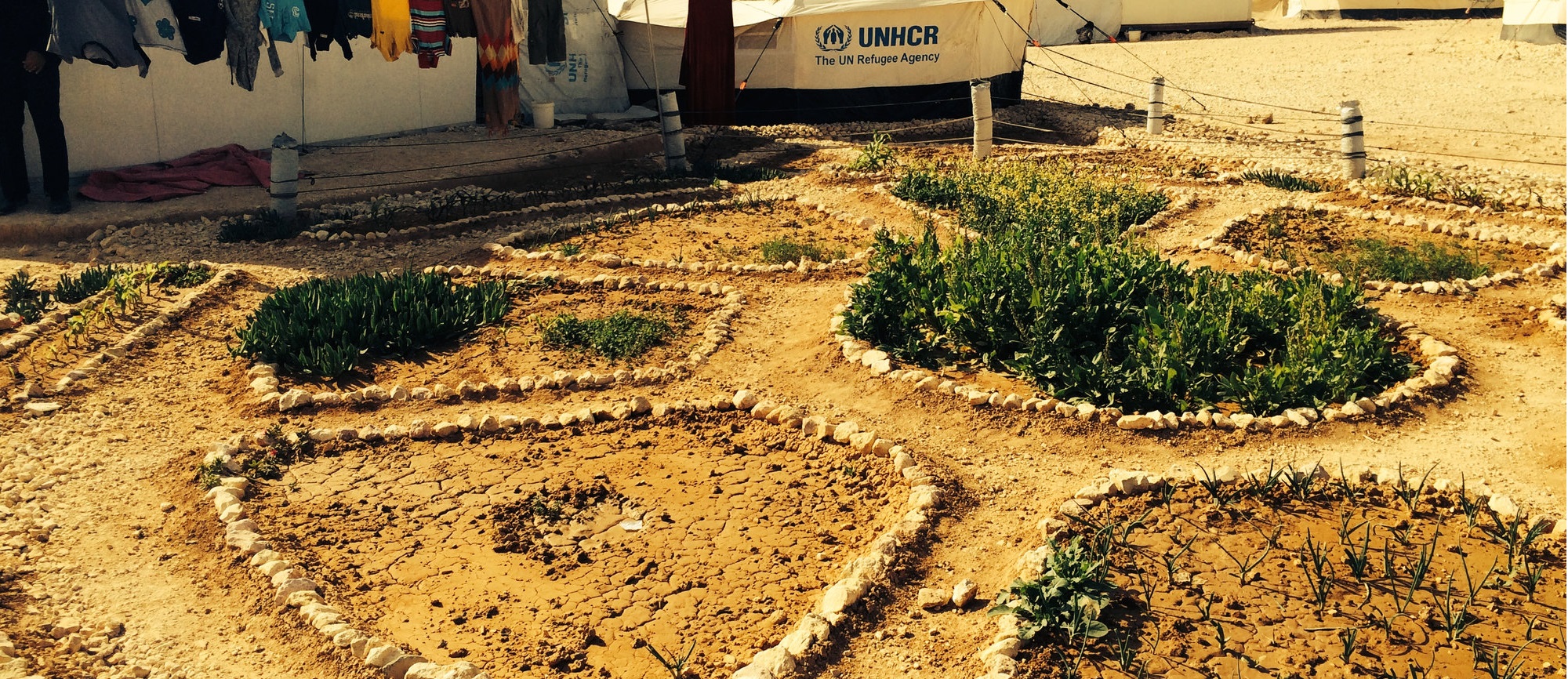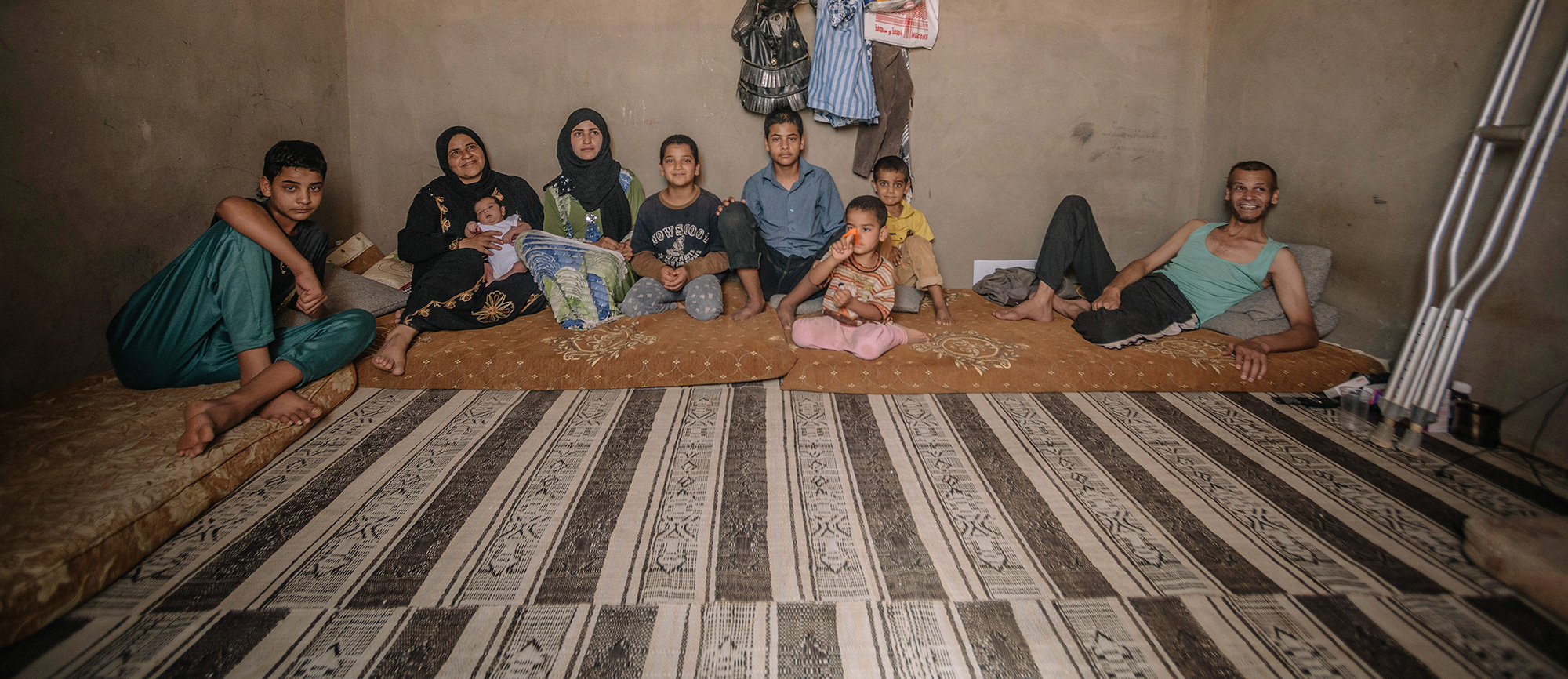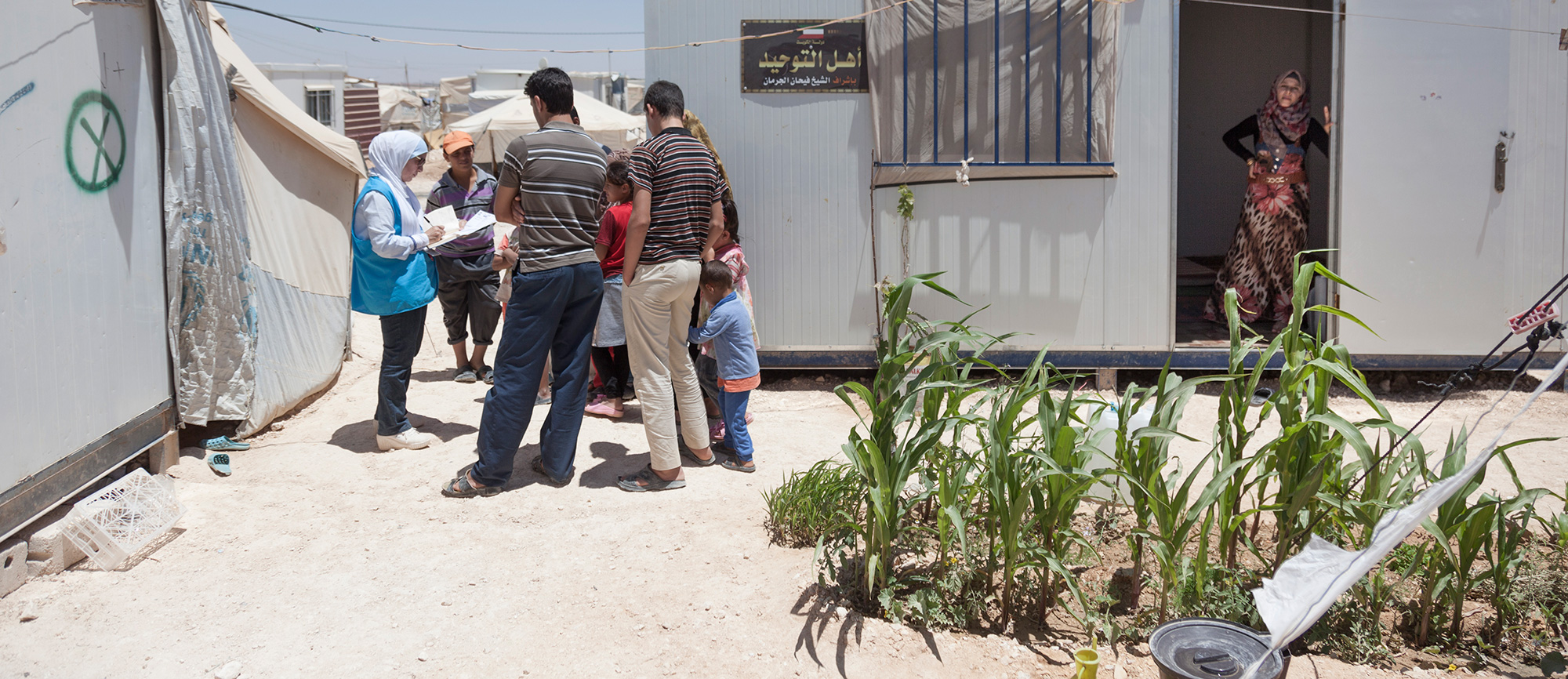1. Define challenges
Finding a way to eliminate the health risks posed by Grey Water
Just under 80,000 Syrian refugees currently live in Za’atari refugee camp in Jordan, a dusty, sprawling site that opened in July 2012. The camp quickly grew into an instant city. So quickly, in fact, that UNHCR and its partners have had to implement many temporary solutions while longer-term projects are completed. One of these solutions are the communal washrooms, built for refugees to share until a sewage and pipeline system for the camp could be finished.
Syrians value their privacy, however, and have repeatedly shown their skill at tweaking solutions provided for them. In Za’atari, they quickly found ways to do laundry outside of their shelters rather than inside the washrooms.
Generally, UNHCR would have encouraged Syrians’ entrepreneurism. But in the absence of a sewage system, the grey water created from the laundry was beginning to gather in the camp’s public areas. Grey water is non-potable, household wastewater that has not come into contact with fecal matter. The water can be recycled, but it looks dirty, and, when left to stagnate in pools, it begins to smell. Stagnant grey water can also attract malaria mosquitoes or spread communicable diseases, meaning that as the summer months neared, the grey water pools in Za’atari were posing a growing health risk.
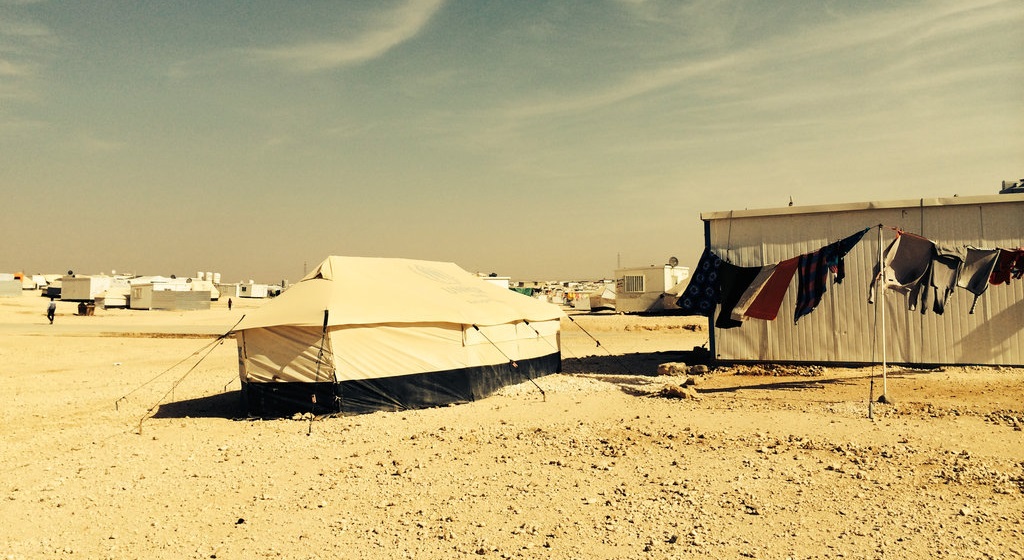
Za’atari Camp is home to nearly 80,000 refugees.
2. Identify solutions
Greening the camp by using Grey Water
Removing the grey water would only have temporarily solved the problem, though, as Syrians were not going to stop washing their clothes outside of their shelters. UNHCR found needed a system that would continually absorb grey water. This is the grey water gardens project.
At the time when the grey water problem became prominent in early 2014, the mass influx of refugees into Za’atari camp had desisted. Syrians living in the camp were increasingly treating the site like a residence, rather than a port of transit. Many who came from rural regions had worked as farmers in Syria, and were searching for avenues to apply their agricultural skills. A few managed to bring plants into Za’atari. They tended to these plants diligently, and the plants green shoots brightened the camp’s dusty grounds. Having a project they could work on seemed to help Syrians in Za’atari recalibrate their lives away from their homes. Plus, the gardening provided older generations with the possibility to pass on their agricultural knowledge to their children and grandchildren.
Taking these factors into account, UNHCR and its partners developed the grey water gardens project in the spring of 2014. The project provides refugees with an opportunity to garden, and uses grey water to irrigate the plots, thus eliminating stagnating pools and the health risk they pose.

3. Test solutions
Engaging the community in the gardens
The first step of the project was to scout suitable plants. Za’atari camp is notorious for its harsh weather conditions, which vary from turbulent winter storms to scalding summer sun. The plants to be used therefore had to be both robust and highly absorbent, so that they can survive Za’atari’s climate and continuously soak up large quantities of grey water. Two suitable plant species were found, and the plants donated to the camp by the Jordanian Ministry of Agriculture.
Next, a few groups of Syrians were invited to participate in a project pilot. UNHCR and partner NGOs had originally intended to repurpose the unused communal washhouses for the grey water gardens, and have several Syrian families tending to a shared garden.
But the pilot quickly revealed that the washhouses idea would not be tenable. Syrians at Za’atari had not wanted to share washrooms for doing laundry, and they did not want to share their gardens. Feedback showed that they preferred individual spaces – spaces to call their own, and for which they could claim responsibility.
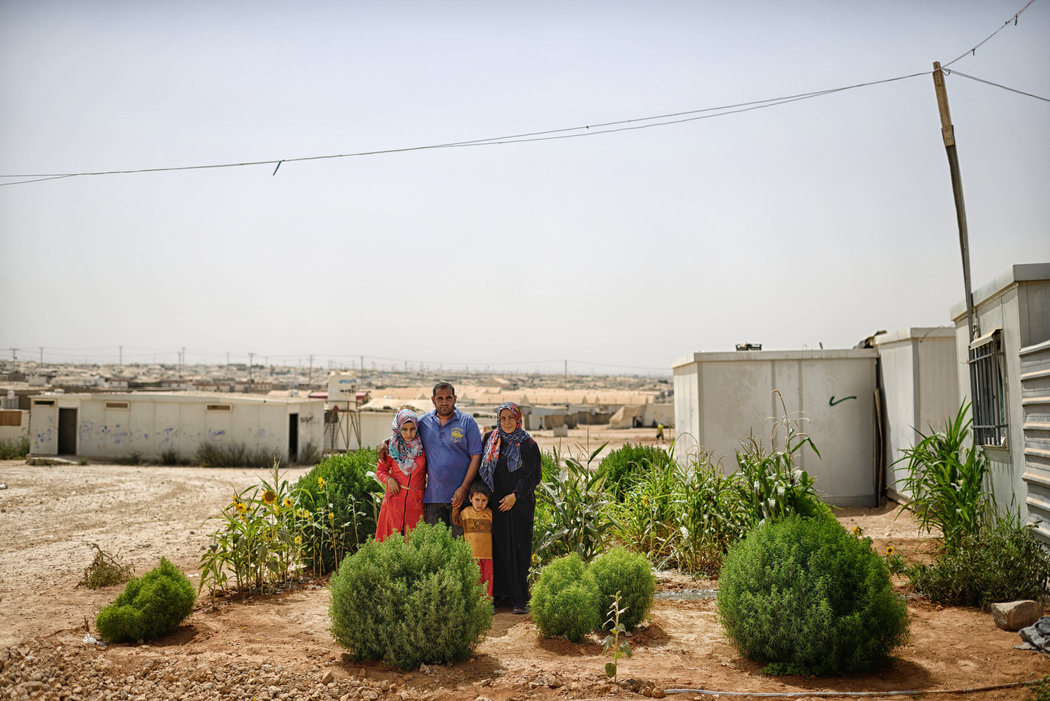
Photo credit: S. Aranda / The New York Times
4. Refine solutions
Creating a sense of ownership with the train-the-trainer approach
With this feedback in mind UNHCR reconceived the grey water gardens to be carried out at the household level. This created a new challenge, however, because each household receiving its own garden meant that every household needed to be instructed on how to best maintain a grey water garden. With approximately 20,000 households in Za’atari, this would have taken a very long time – which would have given the health risk posed by pooling grey water time to grow.
To expedite the project’s progression, a more efficient train-the trainer approach was adopted. Here, a group of refugees are taught how to maintain a grey water garden. They then each train their respective neighbors in the camp, and through teaching each other, strengthen their sense of community.
Refugees were also consulted for the design of the grey water garden instructions, a booklet with photographs that every household receives after training. The photos show every step of the plant-caring process. By including Syrians in the booklet’s creation, UNHCR ensured that it would be easily comprehensible for the camp population.
So far, the project has been met with significant enthusiasm. Often, because the plants are distributed in Za’atari one street at a time, refugees hear about and see the plants even before they receive their own, which gives them time to look forward to having their own garden.

5. Scale solutions
Reaching every household in Za’atari
The first plants were planted in the spring of 2014. By the end of 2015, around 10,000 households in Za’atari, which is about half the camp’s population, had grey water gardens. The project’s target is to reach every household before the end of 2016.
The enthusiasm with which refugees have responded to the grey water garden project has demonstrated how well a household-level community approach works in Za’atari. Ultimately, once the pipeline and sewage systems are in place the gardens will have become superfluous. But because this project provides Syrians at Za’atari with a way to maintain their agricultural skills – at least on a small scale – and pass these skills on to younger generations, the grey water gardens will be retained even after the sewage and pipeline system is completed.






